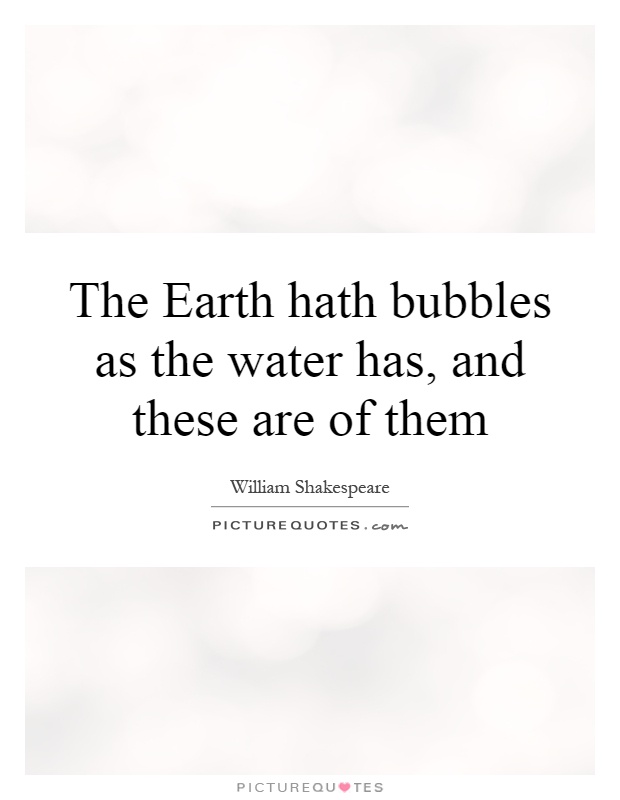The Earth hath bubbles as the water has, and these are of them

The Earth hath bubbles as the water has, and these are of them
In William Shakespeare's play Macbeth, the character of the witches famously utters the line, "The Earth hath bubbles as the water has, and these are of them." This line is spoken during Act 1, Scene 3, as the witches are discussing their plans to meet with Macbeth on the heath.The imagery of bubbles in this line is significant as it symbolizes the fleeting and transient nature of life. Bubbles are delicate and ephemeral, much like the prophecies and promises that the witches make to Macbeth. Just as bubbles can burst and disappear in an instant, so too can the fortunes and ambitions of those who seek power and glory.
The witches in Macbeth are known for their cryptic and enigmatic prophecies, which often come in the form of riddles and paradoxes. This line about bubbles is no exception, as it serves to remind the audience that nothing in life is certain or permanent. Just as bubbles rise to the surface of the water and then vanish into thin air, so too can the ambitions and desires of individuals be fleeting and insubstantial.
The idea of bubbles also suggests a sense of illusion and deception. Bubbles can appear to be solid and substantial, but in reality, they are nothing more than a thin film of soapy water. In the same way, the promises and prophecies of the witches may seem enticing and alluring, but they ultimately lead to destruction and despair.
Overall, the line "The Earth hath bubbles as the water has, and these are of them" serves as a powerful reminder of the impermanence and fragility of life. It is a warning to those who seek power and glory that their ambitions may be as insubstantial as bubbles, and that they should be wary of placing too much trust in the promises of others.












 Friendship Quotes
Friendship Quotes Love Quotes
Love Quotes Life Quotes
Life Quotes Funny Quotes
Funny Quotes Motivational Quotes
Motivational Quotes Inspirational Quotes
Inspirational Quotes